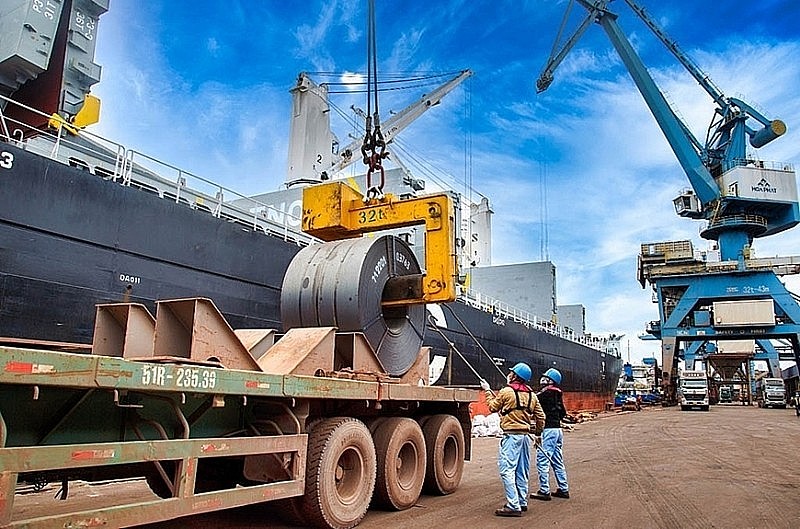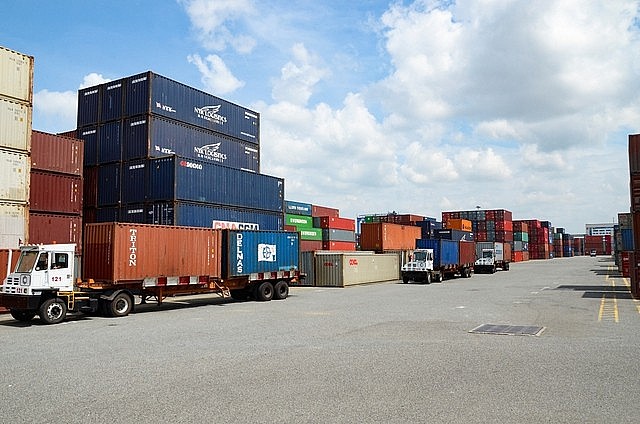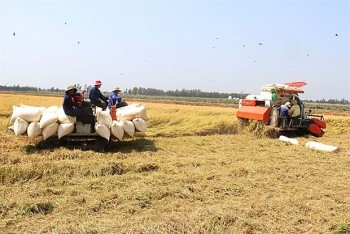Export Turnover Recovers Despite Economic Difficulties
 |
| Export turnover to African countries, Eastern Europe, Northern Europe, and West Asia increased. |
Within the framework of the conference "Application of technology to develop modern and sustainable e-commerce and logistics industry", the Ministry of Industry and Trade recently announced the Vietnam Import-Export Report in 2023.
The report clearly states that 2023 is a difficult year for Vietnam's economy due to impacts from both inside and outside.
Vietnam's economy has great openness. Therefore, it is strongly affected by the decline in global economic growth, aggregate demand, market fluctuations and policy adjustments of major economies, especially interest rate, and exchange rate policies. Vietnam's main growth drivers such as investment, exports and domestic consumption face many challenges.
Exporting still faces many difficulties, especially the export market still has many uncertain factors. Gasoline prices, prices of many types of goods, raw materials and fuel inputs for production, production, living and transportation costs are still high.
Competitive pressure and increasing technical barriers in export markets impact production and business activities, employment and the lives of workers. Difficulties from both raw material supply and consumer demand have impacted Vietnam's export and import turnover in 2023.
According to preliminary data, export turnover in 2023 reached US$354.7 billion, down 4.6% compared to the previous year.
Imports reached US$326.4 billion, down 9.2% compared to the previous year. The trade balance of goods in 2023 has a surplus of US$28.3 billion.
The report points out positive points of import and export in 2023 in the context of the world economy continuing to grow slowly and world aggregate demand decreasing. Export turnover decreased compared to 2022, however exports gradually recovered in the second half of the year.
Export turnover has recovered over the months. By the end of the first quarter, exports recorded a decrease of 11.8% compared to the same period last year.
Exports have shown signs of recovery since the end of the second quarter when exports next month were higher than the previous month (export turnover in May increased by 0.6% compared to April, in June increased by 5% compared to May, in July increased by 2.1%, in August increased by 9%).
 |
| Photo: VGP |
By the end of the third quarter, the decrease in exports narrowed to 8.5% over the same period last year. By the end of 2023, exports reached US$354.7 billion, a decrease narrowing to 4.6% compared to 2022.
In particular, exports of the domestic economic sector, and agricultural and aquatic product groups have recovered well.
Exports of the 100% domestically invested enterprise sector reached US$95.5 billion (down 0.3% compared to 2022), much lower than the export reduction of the foreign-invested sector (including crude oil), reaching US$259.1 billion (down 6.1%).
Exports of agricultural and aquatic products increased compared to the previous year.
Some commodity groups recorded high turnover compared to the previous year, such as fruit and vegetable exports reaching US$5.6 billion, an increase of 66.7%, rice exports reaching US$4.7 billion, an increase of 35.3%, cashew nuts reaching US$3.6 billion, an increase of 18.1%.
In the context of exports to major markets decreasing, export turnover to African countries, Eastern Europe, Northern Europe, and West Asia increased. Of which, exports to African markets reached about US$3 billion, up 4.5% compared to 2022. Exports to the Saudi Arabia market reached US$1.1 billion, up 57.5%, and exports to the UAE market reached US$4.0 billion, an increase of 4.3%.
 | World Bank: Vietnam Needs to Diversify Its Export Industry According to the World Bank, diversification and complexity of export industries will be the key for Vietnam's economy to continue to develop in the future. |
 | Vietnam Becomes Leading Rice Supplier to Singapore in Q1 Vietnam has overtaken India as Singapore's biggest rice supplier for the first time, exporting 32.03% of the total rice supply to the island nation in ... |
 | Vietnam And Brazil Promote Trade Cooperation Currently, Vietnam's exported goods to the Brazilian market are facing fierce competition in both quality and price from other markets. |


